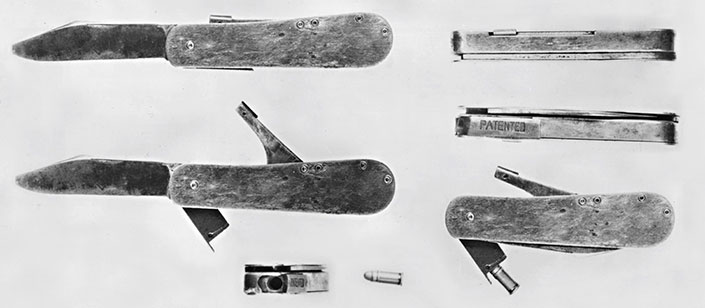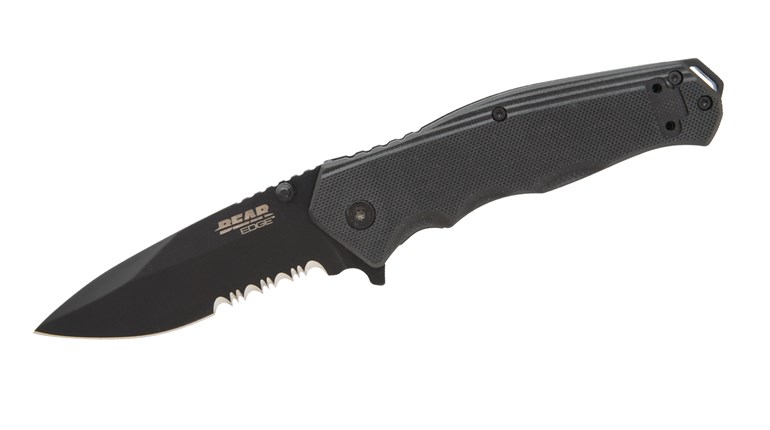
Just after midnight on Saturday, June 13, 1942, the German submarine U-202 landed four agents on the southern coast of Suffolk County, NY, just east of the village of Amagansett. Three nights later, U-584 landed another group of agents near Ponte Vedra Beach in St. Johns County, FL, just south of Jacksonville Beach. The two teams were a part of a sabotage operation code-named Pastorius, and the plan called on them to make their way independently to Cincinnati by the 4th of July.
Once there, they would destroy railway bridges, hydroelectric plants, chemical plants, aluminum plants and locks on the Ohio River. To carry out this mission, they brought ashore waterproof crates containing explosives, fuses, wiring and ignition devices. They also carried firearms. The leader of the New York team was armed with a Walther PPK, serial number 213936K, and the leader of the Florida team carried a Mauser Model 1934 pistol, serial number 554086. In addition to these two pistols, one of the saboteurs also carried an oddity known as The Huntsman Sporting Knife.

The era of the derringer was characterized by the popularization of concealable single-shot pocket pistols, and that popularity lingered as the 19th century gave way to the 20th. Calibers got smaller and smaller and, because of that, pocket pistols shrank to the point that they could masquerade as something else entirely. In 1917, the U.S. Small Arms Company, Inc. of Chicago, IL, began selling The Huntsman—a firearm presenting the outward appearance of a pocketknife. It was designed with a folding 3 5⁄8-inch knife blade and a chamber for a single .22 Long rimfire cartridge. Once loaded, a folding trigger was used to fire the gun.
Since the breechblock was only barely longer than the overall cartridge length, there was no barrel to speak of and, therefore, no rifling. That meant that The Huntsman was for use at extreme close range only, but at the same time it offered a compact package that was only 4 inches long and 1 inch wide. The modesty of size and weight—and the folding knife disguise made it possible for The Huntsman to be carried inconspicuously—which is why it was advertised as being “something you cannot afford to be without.” The marketing announced it as being a “preparedness gift” for home protection that was “as effective as any regular pistol.”
The overall nickel finish and “high-class workmanship” of the standard model made The Huntsman “handsome in appearance.” But this was “not a toy” and the marketing literature was careful to make that point. The marketing literature also assured potential buyers that an “automatic safety makes it absolutely without danger to user” and that it was “lighter than either a knife or pistol and also less expensive.” At $5 delivered, The Huntsman was among the most-affordable self-defense firearms available at the time. It remained in production at U.S. Small Arms Company, Inc. until 1930 and then began a long, slow fade into an obscure corner of firearms history.

Although it certainly doesn’t spring to mind as one of the guns that fought in World War II, The Huntsman Sporting Knife definitely deserves to be included as a part of that broader subject. When eight German saboteurs came to the U.S. during the summer of 1942, they brought one—along with their fuses, detonators and TNT. But their ambition of crippling American war production would end up going unrealized when Operation Pastorius failed just as it was getting under way. This was because a lone U.S. Coast Guardsman discovered the New York team on the beach at Amagansett shortly after its members came ashore. The discovery triggered the largest manhunt in American history up to that time, which convinced the New York team’s leader to surrender everyone to the FBI.
By July 1, 1942, all eight saboteurs were in custody, and all of their demolitions equipment, explosives and firearms had been recovered. A military tribunal was then created to prosecute the enemy agents for violating various articles of war, and the trial was conducted on July 8 of the same year in Assembly Hall No.1 of the Department of Justice building in Washington D.C. During the trial, all of the material the FBI recovered from the two landing sites was admitted as evidence—including one Huntsman Sporting Knife. It had made a long journey from the U.S. to Germany and then back again, but it never fired a shot against the country where it was made.





































